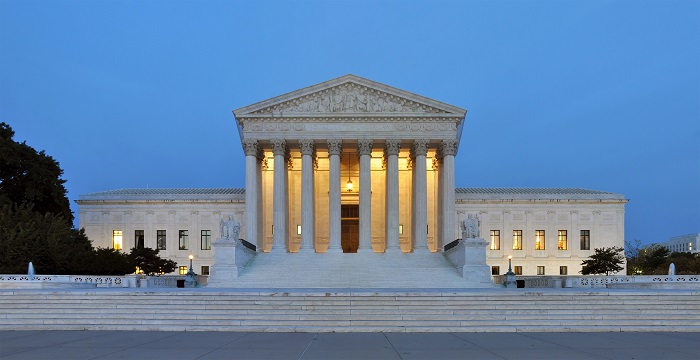On Thursday, the U.S. Supreme Court ruled Andy Warhol violated the copyrights of a photographer by using her images of late music icon Prince in one of his screen print creations.
Lynn Goldsmith, one of music’s most storied photographers who also have historic images of industry titans like Bob Dylan and Bruce Springsteen, captured the legend’s image. The U.S. Supreme Court ruled seven to two, in the decision that Warhol did not make legal “fair use” of the photos.
According to Billboard, Warhol’s attorneys argued for re-using images in hopes of not “chill” creativity. Instead, they received a verdict, led by Justice Sonia Sotomayor, stating Warhol was going for the same commercial purpose as Goldsmith.
“Lynn Goldsmith’s original works, like those of other photographers, are entitled to copyright protection, even against famous artists,” Sotomayor wrote.
The case is the first time in over 30 years the Supreme Court heard a case on creative works and fair use. The Recording Industry Association of America (RIAA) and the National Music Publishers’ Association pushed for a limited understanding of fair use as it was “critical to the American music industry.”
“Prince is smiling as he supports photographers,” said L. Londell McMillan, Prince’s longtime friend and attorney, manager of Prince Legacy, LLC and owner of The Source, in a statement. “Prince continues to support artist creators like Lynn Goldsmith.”
Following the rulling, the RIAA Chairman and CEO Mitch Glazier issued a statement to The Source:
“We applaud the Supreme Court’s considered and thoughtful decision that claims of ‘transformative use’ cannot undermine the basic rights given to all creators under the Copyright Act. Lower courts have misconstrued fair use for too long and we are grateful the Supreme Court has reaffirmed the core purposes of copyright. We hope those who have relied on distorted – and now discredited – claims of ‘transformative use,’ such as those who use copyrighted works to train artificial intelligence systems without authorization, will revisit their practices in light of this important ruling.”
The Warhol creation in question was included in the 1984 article in Vanity Fair called “Purple Fame.” The image was licensed by Goldsmith in 1981, but Warhol would go on to create a dozen other versions which were sold off to art collectors and museums. Those additional versions were not licensed with Goldsmith. When Prince passed, Condé Nast magazine re-used Warhol’s image, again without proper licensing, leading to dueling lawsuits between both sides.
In 2019, a federal judge leaned into “transformative use” stating Warhol’s creations “transformed Prince from a vulnerable, uncomfortable person to an iconic, larger-than-life figure.” A 2021 decision overturned the ruling, leading to the Supreme Court. case.
“If the last century of American art, literature, music, and film is any indication, the existing copyright law, of which today’s opinion is a continuation, is a powerful engine of creativity,” Sotomayor wrote.
Source link

